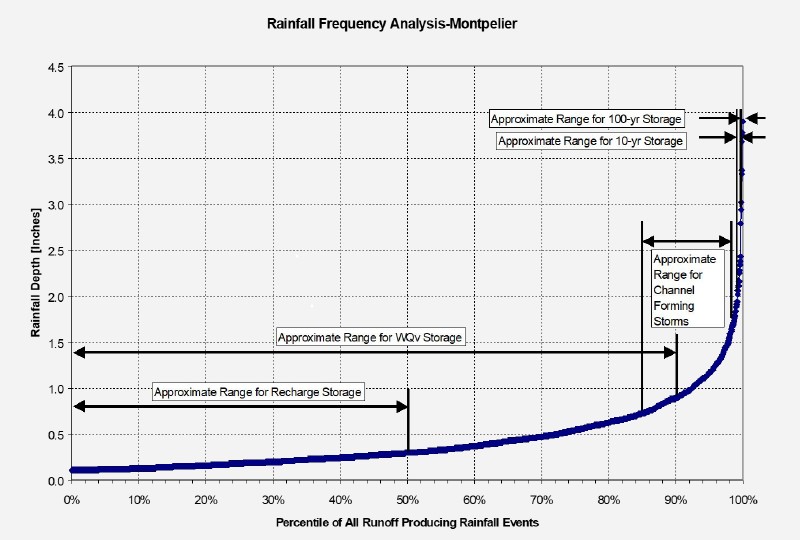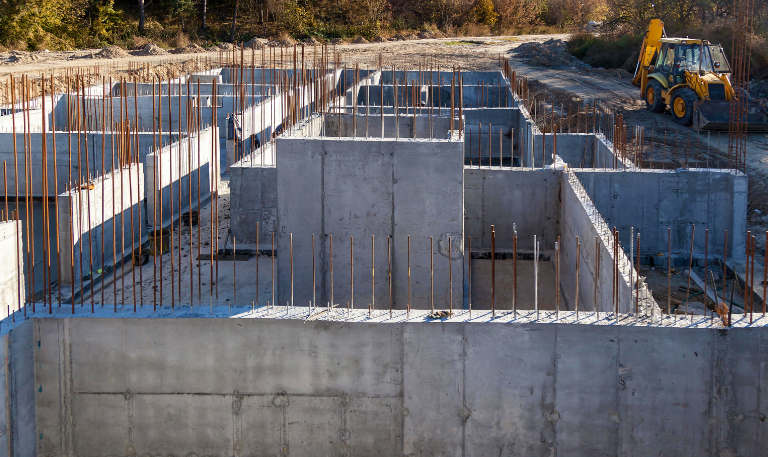Extreme Events in Stormwater Regulation
Most of the Time vs. Most of the Problems
There is a big problem with stormwater regulations. The rules are written to work most of the time. However, it’s these low chance events that make most of the problems.
When it rains a lot quickly the water has no place when the watershed cannot absorb it all immediately. The problem is akin to highway traffic. Lanes are one car wide, and as long as only one car arrives at the lane , no issue. As soon as 2 cars arrive at the same time, the back-up begins and builds very quickly–welcome to rush hour.
This is a particularly salient problem when it comes to stormwater regulations. Once part of the system’s capacity is exceeded the problems cascade leading to flooding and water issues throughout the system.
In short, even though the total rainfall from a small intensity storm over a longer time period can deliver the same volume as a high-intensity storm in a short period of time, it is the latter situation that causes all of the problems. In fact these high intensity often deliver less total rainfall, but do far more damage.
The rules cover most of the time, NOT most of the problems, as the figure shows the frequency of storms that are effectively unmanaged.

While most rainfall events are small, it is the fewer large events that create most of the problems.
From One Extreme to the Other
The problem of extreme events is further exacerbated by environmental conditions. While wet soil has more water, than dry soil; it also absorbs additional water quicker than dry soil. Climate change is forcing weather away from its normal patterns and more towards an all-or-nothing precipitation problem.
Furthermore in an age where for 5 straight weeks we got 5 different 1,000 year events, we need to recognize that extreme is not abnormal; it is normal. Property and in particular flood insurance rates have skyrocketed recently. Insurance companies raison d’etre is to manage risk, and they are passing the costs along.
So in a world with more frequent extreme events that cause most of the problems, what else can be done without just wantonly raising prices.
Better Stormwater Regulations
With most houses and dwellings not build to handle standing water, this presents a significant conundrum. Do we build more expensive resilient housing or design our stormwater systems better.
The simple answer is to better design our stormwater regulations to be as good as they can be to minimize the problems. This means:
- Incorporating real observations and real performance as opposed to supposed performance. The implementation of our rules is divorced from the reason we decided we needed them.
- No “participation trophies”: Recognizing we shouldn’t congratulate ourselves when our stormwater system handles small events, specifically the size events that would handle themselves.
- It also mean tackling this problem in manageable chunks where this issue starts, our love of impermeable cover.
Talking with a neighbor the other day, they mentioned that their last neighborhood used to flood with a heavy rain. They were so fed up with storm drains not functioning properly that they did a sewer pipe inspection. They found out that several expected drains and pipes were NEVER installed or were smaller than expected. Furthermore, in speaking with building code officials they realized that if the officials acknowledged these facilities as-built they would not be allowed to continue to issue building permits. As you might imagine, nothing happened. So they decided to move and become my neighbors. While their actions addressed their problem, it did not solve the problem. And as you know ignored problems tend to become much bigger.
Better stormwater regulations begins with a mea culpa. We can do a lot better than when we first wrote stormwater records decades ago and truly reduce the problems created by extreme rainfall events.

VP of Business DevelopmentAaron Fisher
Latest News

4 Ways To Reinforce Concrete
Concrete is one of the most fundamental materials used in construction. If you’re working on a domestic project or a […]

The Environmental Benefits Of Using Ready-Mix Concrete
The construction industry is changing quickly to meet the growing demand for sustainability and eco-friendly practices. One of the most […]

6 Essential Tips For Grouting Stone Veneer
Grouting stone veneer is an important step in the installation process that can significantly impact the overall look and durability […]

Should You Fill Hollow Concrete Blocks?
Hollow concrete blocks are widely used in construction due to their strength, versatility, and lighter weight compared to solid blocks. […]
